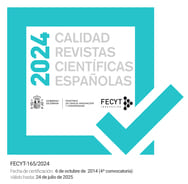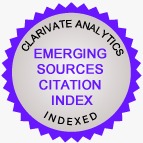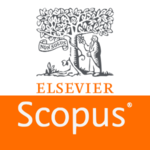Could the listing and the responsible tourist activation of cultural heritage protect the landscape? The case of water architecture in Andalusia
DOI:
https://doi.org/10.25145/j.pasos.2025.23.022Keywords:
Andalusia, chronology, cultural and tourist strategy, waterworks, territorial protectionAbstract
The aim of this research is to show the impact of heritage protection on the recognition, valuation and activation of the landscape. To this end, the evolution of the protection of water-related assets in Andalusia will be used as a case study. This is an area where the recognition and protection of the landscape is limited to the environmental sphere, but which, paradoxically, bases its economy on a tourism strategy centred on its cultural, heritage and landscape wealth. Therefore, the first step is to establish a chronology between the categories of these assets included in the General Catalogue of the Historical Heritage of Andalusia over the last hundred years and the different strategies, plans and laws for the landscape protection. Next, it is studied how the new heritage figures tend to build an important landscape support that requires greater attention from a strategic, urban and territorial point of view.
Downloads
Publication Facts
Reviewer profiles N/A
Author statements
- Academic society
- PASOS. Revista de Turismo y Patrimonio Cultural
- Publisher
- Instituto Universitario de Investigación Social y Turismo. Universidad de La Laguna (España) - Instituto Universitario da Maia ISMAI (Portugal)
References
Acosta Bono, G., Fernández Cacho, S. y Fernández-Baca Casares, R. (2017). El patrimonio cultural en la Estrategia de Paisaje de Andalucía. Erph_ Revista Electrónica de Patrimonio Histórico, 20, 28. https://doi.org/10.30827/erph.20.2017.6294
Álvarez Mora, A. (2001). El Canal de Castilla, una infraestructura viva al servicio del territorio. En R. Guerra Garrido (Coord.) El Canal de Castilla: un plan regional, 1, 51-70. Junta de Castilla y León.
Ballester, J. M. (2014). Evolución del concepto de patrimo¬nio cultural en Europa: la incorporación de las obras públicas. Revista de Obras Públicas: Órgano profesional de los ingenieros de caminos, canales y puertos, 3559, 7-12.
Castillo Martín, A. (Coord). (2008). Manantiales de Andalucía. Junta de Andalucía, Agencia Andaluza del Agua, Consejería de Medio Ambiente.
Castillo Ruiz, J. (2021). El patrimonio cultural podría estar en peligro y los responsables son la memoria, la salvaguardia, la comunidad y el paisaje cultural (además del turismo, claro). Erph_: Revista Electrónica de Patrimonio Histórico, 28.
Consejería de Agricultura, Ganadería, P. y D. S. , Junta de Andalucía (2003). Mapa de Paisajes de Andalucía.
Consejería de Fomento Infraestructuras y Ordenación del Territorio, Junta de Andalucía. (2014). Catálogos provinciales de Paisaje de Andalucía.
Consejería de Obras Públicas y Transporte, Junta de Andalucía. (2006). Plan de Ordenación del Territorio de Andalucía.
Consejería de Turismo, Cultura y Deporte, Junta de Andalucía. (2023). Percepción de los residentes hacia el turismo en Andalucía. https://multimedia.andalucia.org/saeta/percepcion-residentes_completo.pdf
Fernández Cacho, S. (2019). La dimensión paisajística en la gestión del patrimonio cultural en España. Estudios Geográficos, 80(287), 026. https://doi.org/10.3989/estgeogr.201943.023
Fernández Cacho, S., Fernández Salinas, V., Hernández León, E. López Martín, E. Quintero Morón, V. Rodrigo Cámara, J. M. y Zarza Ballugera, D. (2008). Caracterización patrimonial del mapa de paisajes de Andalucía. Revista PH, 16. https://doi.org/10.33349/2008.66.2526
Fernández Cacho, S., Fernández Salinas, V., Rodrigo Cámara, J. M. et. al. (2018). Registro de paisajes de interés cultural de Andalucía: documento divulgativo. Junta de Andalucía, Consejería de Cultura, Instituto Andaluz del Patrimonio Histórico.
Fernández-Baca Casares, R., Fernández Cacho, S. y Salmerón Escobar, P. (2017). Guía del paisaje histórico urbano de Sevilla: documento divulgativo. Junta de Andalucía, Consejería de Cultura.
González Tascón, I. y Bestué Cardiel, I. (Eds.). (2006). Breve guía del patrimonio hidráulico de Andalucía. Junta de Andalucía, Agencia Andaluza del Agua, Consejería de Medio Ambiente.
Hernández Gutiérrez, A. S., Martini, Y. A., Pereda, J. L., Velásquez, V. y Fernández Matrán, M. A. (1998). Proyecto global de recuperación y conservación urbano-arquitectónico integral del conjunto histórico de Los molinos de la Villa de La Orotava. En IV Congreso Internacional de Rehabilitación del Patrimonio Arquitectónico y Edificación (Cuba ’98): libro de actas, 445-448. Centro Internacional para la Conservación del Patrimonio, CICOP.
Instituto del Agua de la Universidad de Granda. (s.f.). CONOCETUSFUENTES. http://www.conocetusfuentes.com/manantiales_y_fuentes.html
Instituto de Estadística y Cartografía de Andalucía, Junta de Andalucía. (2024). Nota Divulgativa sobre la Encuesta de Coyuntura Turística de Andalucía. https://www.juntadeandalucia.es/institutodeestadisticaycartografia/dega/encuesta-de-coyuntura-turistica-de-andalucia-ecta/nota-divulgativa-cuarto-trimestre-2023#:~:text=En%20cuanto%20a%20la%20distribuci%C3%B3n,13%2C2%25%2C%20respectivamente.
Junta de Andalucía. (2012). Estrategia de paisaje de Andalucía.
Kokudev, V., Lupiañez González, A., Mateo Segura, B. y Ruiz de Clavijo, M. (2017). Recuperación del Rec Comtal (Barcelona): Estudios Previos entre los barrios de Vallbona y Trinitat Vella. Planur-e: territorio, urbanismo, paisaje, sostenibilidad y diseño urbano, 9.
León Robles, C. A., Reinoso Gordo, J. F. y Mataix Sanjuán, J. (2012). La acequia gorda del río Genil en Granada: necesidad de integración urbana de una infraestructura milenaria. EGA: revista de expresión gráfica arquitectónica, 19, 298-305.
Machuca Santa Cruz, L. (2019). Recuperación del Caminito del Rey. Luis Machuca y asociados SLP y RU Books (Recolectores Urbanos), 2019
Mosquera Adell, E. (2011). La cultura del agua en la imagen patrimonial de Andalucía. Sevilla: Secretariado de Publicaciones, Universidad de Sevilla, 2011.
Rodrigo Cámara, J. M. (2019). Uses and Historical Management of Water in the Landscapes of Cultural Interest in Andalusia. En Council of Europe (Ed.), 22nd Meeting of the workshops for the implementation of the Council of Europe Landscape Convention (pp. 1–7).
Rodrigo Cámara, J. M., Díaz Iglesias, J. M., Fernández Cacho, S., Fernández Salinas, V., Hernández León, E., Quintero Morón, V., González Sancho, B. y López Martín, E. (2012). Registro de paisajes de interés cultural de Andalucía. Criterios y metodología. PH: Boletín Del Instituto Andaluz Del Patrimonio Histórico, 20(81), 64–75.
Secretaría General de Ordenación del Territorio. (2014). Sistema Compartido de Información sobre el Paisaje de Andalucía. Aplicación al litoral. Junta de Andalucía, Consejería de Medio Ambiente y Ordenación del Territorio.
Universidad de Granada. (s.f.) Memola Project: Mediterranean Mountainous Landscapes, an historical approach to cultural heritage based on traditional agrosystems. https://memolaproject.eu/es
Zoido Naranjo, F. (2007). Los paisajes del agua en Andalucía.
Downloads
Published
How to Cite
Issue
Section
License
Copyright (c) 2024 Celia López-Bravo

This work is licensed under a Creative Commons Attribution-NonCommercial-NoDerivatives 4.0 International License.
I confirm that the work is original (of my/our authorship), and that it will not be submitted to other journals or publications until the final resolution of the review process in PASOS, RTPC.
I authorize the publication of my work by PASOS, PSTN of free and open access in any of the formats that I deem appropriate, for an indefinite period of time and as a non-remunerated collaboration.
Likewise, the author(s) understands that the published work may be linked or deposited on any server or included in other publications (republication), provided that the new place and/or new edition references the original publication and acknowledges the authorship and copyright ownership of PASOS RTPC publications.
Authors understand that a plagiarism-self-plagiarism check will be performed, and the article may be removed at any time from the editorial flow.










